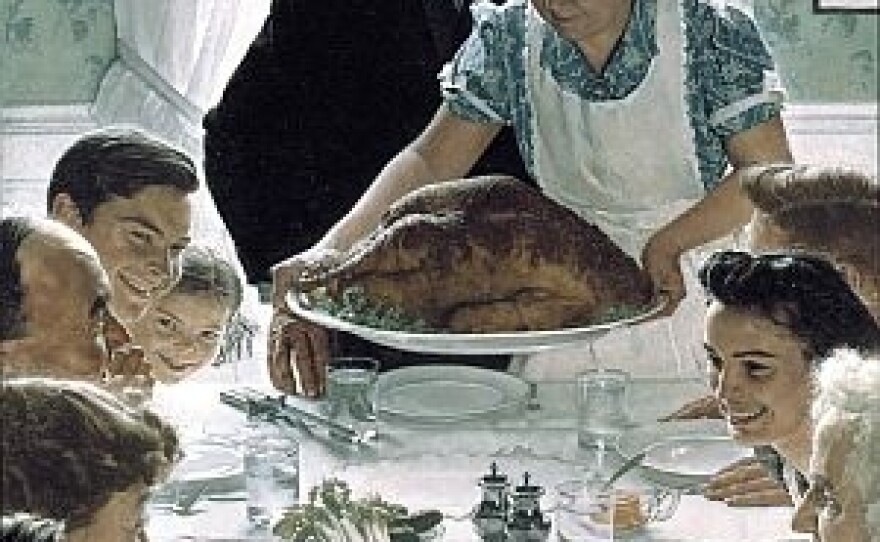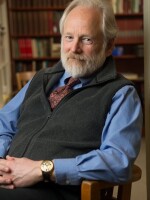In early 1943, polls showed that fewer than 25% of the American people remembered the Four Freedoms Franklin Roosevelt had proclaimed two years earlier: freedom of speech, freedom to worship, freedom from want, and freedom from fear. Today virtually all of us do, though we usually can't recall FDR's words. What we remember are the images of Arlington, Vermont artist Norman Rockwell: a speaker at Town Meeting; a diverse group of people at prayer; a family at the Thanksgiving table; a couple tucking their children into bed.
Rockwell had been inspired by Roosevelt and was eager to contribute to the war effort. He got his best ideas while shaving and one morning remembered a town meeting when a neighbor opposed a popular proposal for a new school -- an image that became Freedom of Speech.
Rockwell's big challenge was to narrate ideas without a text and to convey a meaning that could be understood in a matter of seconds by readers flipping through a magazine. He started with a basic idea, did a number of small sketches until he had one he liked, and then posed his models by taking hundreds of photos of his Arlington neighbors and friends - as individuals and in groups - before painting. Auto mechanic Carl Hess became the focus of Freedom of Speech; Mrs. Thaddeus Wheaton, the Rockwell family cook, presented the turkey in Freedom from Want. Rockwell spent a month and a half on Freedom of Speech, starting over four times; the whole series took almost six months to complete. They appeared in The Saturday Evening Post in February and March 1943 and were adopted by the federal Office of War Information as posters for the Victory Loan Drive.
This was a controversial choice. The Office of War Information was snarled in an ideological conflict over how war information should be presented. Distinguished artists and writers sought to speak seriously to the American people. Opposing them were advertisers and movie executives who believed that the war had to be sold. The advertisers won and a former executive of Coca Cola, for whom Rockwell had done ads in the lsquo;30's, chose his work to do the selling. The entire OWI Writer's Division resigned in protest, leaving behind a satirical poster of the Statue of Liberty holding a Coke, with the caption The War that Refreshes - The Four Delicious Freedoms.
Rockwell was stung - he considered himself a serious artist and hated being dismissed as an advertising illustrator. It didn't help when executives of the Pioneer Suspender Company, noting their product worn by the caring father in Freedom from Fear, proposed a campaign promoting the idea that anyone whose pants were supported by Pioneer Suspenders indeed had nothing to fear.
In the end, Rockwell had nothing to fear either. More than four million copies of his Four Freedoms were printed as posters during the war. Rockwell's portrayals of his Vermont neighbors have become among the most widely recognized images in history - iconic expressions of American life and American values.









